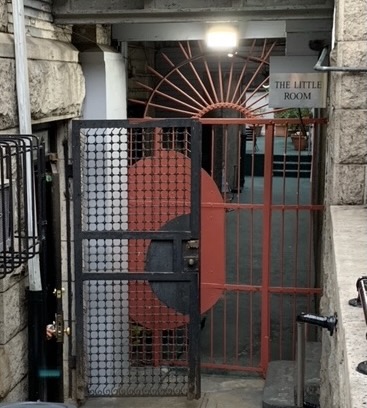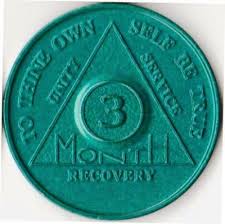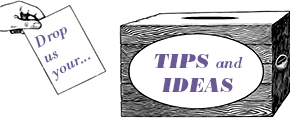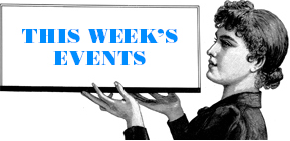
By Rosemary McGinn
The Upper West Side has long been home to a thriving community of loosely organized 12-Step groups that provide life-saving support through meetings and face-to-face fellowship.
Often referred to as “mutual-aid” groups by experts, all kinds of 12-Step groups have found meeting places in the neighborhood, including Alcoholics Anonymous (AA), Al-Anon Family Groups (a 12-Step program for relatives and friends of alcoholics), Narcotics Anonymous (NA), Naranon Family Groups, Sex Addicts Anonymous, Overeaters Anonymous, Gamblers Anonymous, Debtors Anonymous, and others.
Many major 12-Step fellowships have a history of seeking out people who are beyond the reach of traditional meetings. AA has a well-established infrastructure for connecting with the homebound, incarcerated, those living in remote areas, or service members stationed in far-flung areas. Before the pandemic, there was a small but well-organized presence of online AA groups, Online Intergroup of Alcoholics Anonymous (OIAA).
So, on March 22, 2020, when New York State banned non-essential gatherings of individuals of any size for any reason, many 12-Step groups and members knew exactly what to do to shift to digital platforms.

New York Intergroup is where the business of local AA gets done. The office’s small staff responded to the crisis with alacrity and ingenuity, starting with securing an enterprise license — a contract that allows purchase of a software product at a discounted, fixed rate for a certain period of time — with a leading provider of remote conferences, Zoom. They offered no-cost Zoom accounts for groups that could support up to 1,000 participants.
Intergroup also helped groups set up and host virtual meetings, creating resources such as meeting listings and user guides. Special workers were hired to provide technical support, rather than the volunteers who form the heart of the outreach function. That enterprise license was only terminated in March 2022, after months of assisting groups as they sought their own licenses. Intergroup continues to offer help and guidance as groups consider re-opening in-person meetings.
Is In-Person Indispensable?
Experts and lay people have assumed that in-person meetings are indispensable to 12-Step recovery, as evidenced by the previous paucity of virtual meetings. But as the pandemic continues to twist and turn through New York, we may be learning otherwise. Today, remote meetings that use technology (like Zoom) are “home” to hundreds, maybe thousands, of “Zoom babies” – people whose entire experience of AA has been remote. Many of them say they had tried to get sober via face-to-face meetings, but were unsuccessful.
While virtual groups started as a stopgap way to get through the pandemic, both participants and experts say virtual sessions have some clear advantages and will likely become a permanent part of recovery.
It’s hard to assess the size of the 12-Step community anywhere, and the Upper West Side is no exception. Each group is autonomous, not “reporting in” to a governing body; the local and international offices are there to serve the groups, not control them. The number of groups does not capture the scale or number of individuals attending. Nonetheless we pursue here some imperfect strategies to get a sense of how the pandemic has affected Upper West Side 12-Step groups and members.
Pre-pandemic, the Upper West Side was home to 169 AA meetings at all times of day and night. Today, 138 meetings are listed for the Upper West Side: 65 virtual and 73 in-person.
One of the most popular and prominent meeting spaces for all mutual-aid groups on the Upper West Side is “The Little Room”. (See the photo above.) Nestled under the parish house of Holy Name of Jesus-Saint Gregory the Great Parish, at 207 West 96th Street, meetings start at The Little Room every day at 6 am, with the doors closing after 11 pm. Pre-pandemic, capacity was about 40; it’s now subject to adjustment.
In another example, a thriving Al-Anon group held two meetings every Saturday afternoon on West 99th Street, with up to 100 participants at each meeting. Within weeks of the lockdown, they banded together to launch two virtual meetings that sometimes draw over 100 participants each. The group has just re-opened an in-person meeting on Saturdays, limited to 30 people. So, while this group formerly hosted around 150 participants weekly, today it averages about the same albeit in different formats.
The story of the Upper West Side 12-Step community is relevant not just to people who attend meetings and their families and friends, but, given its intricate interdependence with the community, it affects all of us.
Rosemary McGinn is a lawyer and a Credentialed Alcoholism and Substance Abuse Counselor (CASAC).








Thank you Rosemary for a wonderful and inspiring article.
Virtual 12 step meeting attendance during the COVID-19 . Galanter M et al
Journal of addiction medicine 2021
Why haven’t they returned to normal in person capacity? The US has record numbers of people dying from drug overdoses. People doing meetings at home are relapsing. There are fewer meetings than before. It’s terrible and nothing to be proud of.
Thanks much for this. What would AA people do w/ no more meetings? The answer quickly became clear: They’d socialize online. There are no reliable stats about relapses in the Covid age, but anecdotally the consensus seems to be quite the opposite.
And on a related note: I’d like to point out how Zoom has attracted hundreds of new meetings composed of AAers who resent what they call the “God business”: They’re Freethinkers, or Humanists, Atheists, or Agnostics, or Godless Heathens: But they are all secular. There are currently some 800+ Secular meetings, very few of which existed before Covid & Zoom. FYI, here’s the current list of these international meetings: https://bit.ly/secularmeetings
This was informative, interesting and insightful. Although I knew why the zoom meeting started I had no idea the footprint was already there. Nor did I know that someone was enterprising enough to get discounts for the zoom platform. Thanks for this inspiring story.